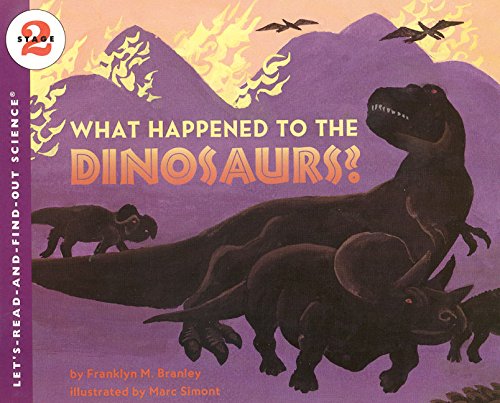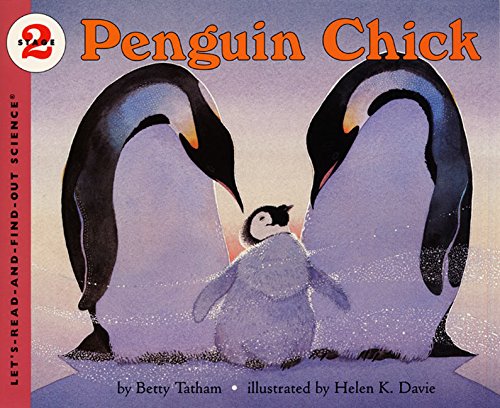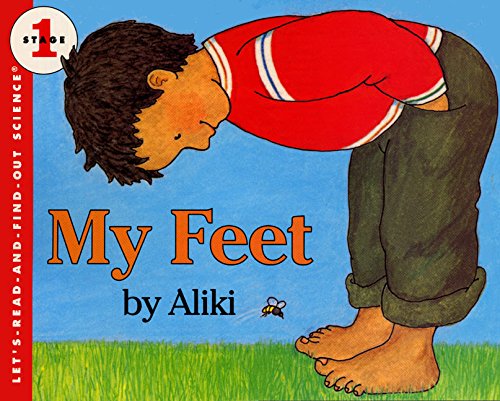-
Look Out for Turtles!
Melvin Berger, Megan Lloyd
Paperback (HarperCollins, June 21, 2000)Turtles are among the oldest living creatures in the world. They have been on earth for nearly 200 million years! This nonfiction picture book is an excellent choice to share during homeschooling, in particular for children ages 4 to 6. It’s a fun way to learn to read and as a supplement for activity books for children.In Look Out for Turtles! readers will discover why these creatures have survived so long. Hard shells protect many turtles from harm. Colorful markings on their shells help some turtles to blend in with their surroundings. Different kinds of turtles can live almost anywhere on land or sea and can eat many kinds of plants and animals...Today turtles must struggle to. survive. They are hunted, and threatened by pollution. There is less and less open space for turtles to live in. If turtles are going to be around for another 200 million years, they are going to need our help!This is a Level 2 Let’s-Read-and-Find-Out Science title, which means the book explores more challenging concepts for children in the primary grades and supports the Common Core Learning Standards, Next Generation Science Standards, and the Science, Technology, Engineering, and Math (STEM) standards. Let’s-Read-and-Find-Out is the winner of the American Association for the Advancement of Science/Subaru Science Books & Films Prize for Outstanding Science Series. L
L
-
Ant Cities
Arthur Dorros
Paperback (Scott Foresman, March 18, 2005)Did you ever wonder where an ant goes when it disappears into an anthill? Underneath the hill, there are miles of tunnels and hundreds of rooms! With simple, easy-to-understand words and colorful illustrations, Arthur Dorros explains the life of a harvester ant for the early reader and even shows readers how to build their own ant farms! This is a Stage 2 Let's-Read-and-Find-Out, which means the book explores more challenging concepts for children in the primary grades. Let's-Read-And-Find-Out is the winner of the American Association for the Advancement of Science/Subaru Science Books & Films Prize for Outstanding Science Series. Supports the Common Core Learning Standards and Next Generation Science Standards. O
O
-
What the Moon is Like
Dr. Franklyn M. Branley, True Kelley
Paperback (HarperCollins, May 3, 2000)Imagine that you're walking on the moon. What is it like? For thousands of years people looked up at the moon and wondered about it. Now we know what the moon is like. There is no air on the moon and nothing grows, but there are towering mountains and deep craters—and much more! Colder than the desert, the hotter than the desert, the moon is an amazing place to explore. This nonfiction picture book is an excellent choice to share during homeschooling, in particular for children ages 5 to 7 who are ready to read independently. It’s a fun way to keep your child engaged and as a supplement for activity books for children.This is a Level 2 Let's-Read-and-Find-Out Science book, which means the book explores more challenging concepts perfect for children in the primary grades and supports the Common Core Learning Standards and Next Generation Science Standards. Let's-Read-and-Find-Out is the winner of the American Association for the Advancement of Science/Subaru Science Books & Films Prize for Outstanding Science Series. N
N
-
Dinosaur Tracks
Kathleen Weidner Zoehfeld, Lucia Washburn
Paperback (HarperCollins, April 3, 2007)Kids love dinosaurs, and now they can take the same steps as a T-Rex! Many of these fascinating prehistoric creatures left their tracks or footprints in the ground. Read and find out how these amazing developments all started with a footprint created millions of years ago. Fossilized dinosaur tracks can possibly teach us more about how these creatures lived than we could ever learn from bones. This nonfiction picture book is an excellent choice to share during homeschooling, in particular for children ages 5 to 7. It’s a fun way to learn to read and as a supplement for activity books for children.This is a Level 2 Let’s-Read-and-Find-Out Science title, which means the book explores more challenging concepts for children in the primary grades and supports the Common Core Learning Standards, Next Generation Science Standards, and the Science, Technology, Engineering, and Math (STEM) standards. Let’s-Read-and-Find-Out is the winner of the American Association for the Advancement of Science/Subaru Science Books & Films Prize for Outstanding Science Series. K
K
-
You're Aboard Spaceship Earth
Patricia Lauber, Holly Keller
Paperback (HarperCollins, April 26, 1996)The earth is like a spaceship in orbit—it has everything on board that we need to survive: water, food, and air with oxygen. Unlike a space shuttle, Earth is able to renew its resources. Read and find out why Earth is the greatest spaceship to be aboard! This nonfiction picture book is an excellent choice to share during homeschooling, in particular for children ages 4 to 6. It’s a fun way to learn to read and as a supplement for activity books for children.This is a Level 2 Let’s-Read-and-Find-Out Science title, which means the book explores more challenging concepts for children in the primary grades and supports the Common Core Learning Standards, Next Generation Science Standards, and the Science, Technology, Engineering, and Math (STEM) standards. Let’s-Read-and-Find-Out is the winner of the American Association for the Advancement of Science/Subaru Science Books & Films Prize for Outstanding Science Series. K
K
-
What Happened to the Dinosaurs?
BRANLEY, Dr. Franklyn M. Branley, Marc Simont
Paperback (HarperCollins, June 21, 2000)In this enlarged edition of the Level 2 Let's-Read-and-Find-Out Science book, distinguished writer Franklyn M. Branley and award-winning artist Marc Simont provide the perfect introduction to an always fascinating subject—the disappearance of the dinosaurs. This nonfiction picture book is an excellent choice to share during homeschooling, in particular for children ages 4 to 6. It’s a fun way to learn to read and as a supplement for activity books for children.What happened to the dinosaurs?For millions of years these fantastic creatures roamed our planet. Then, suddenly, they all disappeared. Scientists wonder why. What could have caused this huge extinction 65 million years ago?This is a Level 2 Let’s-Read-and-Find-Out Science title, which means the book explores more challenging concepts for children in the primary grades and supports the Common Core Learning Standards, Next Generation Science Standards, and the Science, Technology, Engineering, and Math (STEM) standards. Let’s-Read-and-Find-Out is the winner of the American Association for the Advancement of Science/Subaru Science Books & Films Prize for Outstanding Science Series.Outstanding Science Trade Books for Children 1989 (NSTA/CBC) L
L
-
Almost Gone: The World's Rarest Animals
Steve Jenkins
Paperback (HarperCollins, Jan. 31, 2006)Have you seen a northern hairy-nosed wombat or an eastern barred bandicoot? These animals are so rare, they might disappear forever, and they're not alone. Read and find out about some of the animals that are almost gone. This nonfiction picture book is an excellent choice to share during homeschooling, in particular for children ages 5 to 7. It’s a fun way to learn to read and as a supplement for activity books for children.This is a Level 2 Let’s-Read-and-Find-Out Science title, which means the book explores more challenging concepts for children in the primary grades and supports the Common Core Learning Standards, Next Generation Science Standards, and the Science, Technology, Engineering, and Math (STEM) standards. Let’s-Read-and-Find-Out is the winner of the American Association for the Advancement of Science/Subaru Science Books & Films Prize for Outstanding Science Series. R
R
-
Oil Spill!
Melvin Berger, Paul Mirocha
Paperback (HarperCollins, April 30, 1994)Did you know that an oil spill occurs somewhere in the world almost every day of the year? Oil spills can have many different causes, but the result is the same. Oil harms plants and wildlife that make the oceans and coastlines their home. Scientists are learning the best ways to combat oil spills. Learn how you can help, too! This nonfiction picture book is an excellent choice to share during homeschooling, in particular for children ages 4 to 6. It’s a fun way to learn to read and as a supplement for activity books for children.This is a Level 2 Let’s-Read-and-Find-Out Science title, which means the book explores more challenging concepts for children in the primary grades and supports the Common Core Learning Standards, Next Generation Science Standards, and the Science, Technology, Engineering, and Math (STEM) standards. Let’s-Read-and-Find-Out is the winner of the American Association for the Advancement of Science/Subaru Science Books & Films Prize for Outstanding Science Series. L
L
-
Gravity Is a Mystery
Dr. Franklyn M. Branley, Edward Miller
Paperback (HarperCollins, May 29, 2007)What goes up must come down. Everybody knows that. But what is it that pulls everything from rocks to rockets toward the center of the earth? It’s gravity. Nobody can say exactly what it is, but gravity is there, pulling on everything, all the time. With the help of an adventurous scientist and his fun-loving dog, you can read and find out about this mysterious force. This nonfiction picture book is an excellent choice to share during homeschooling, in particular for children ages 5 to 7. It’s a fun way to learn to read and as a supplement for activity books for children.This is a Level 2 Let’s-Read-and-Find-Out Science title, which means the book explores more challenging concepts for children in the primary grades and supports the Common Core Learning Standards, Next Generation Science Standards, and the Science, Technology, Engineering, and Math (STEM) standards. Let’s-Read-and-Find-Out is the winner of the American Association for the Advancement of Science/Subaru Science Books & Films Prize for Outstanding Science Series. M
M
-
Penguin Chick
Betty Tatham, Helen K. Davie
Paperback (HarperCollins, Dec. 18, 2001)An emperor penguin lays an egg on the Antarctic ice. In the bitter cold, miles away from the only source of food, how can the chick survive? A father penguin keeps his mate's egg warm by balancing it on his feet for two entire months. Learn how penguin parents take care of their babies in one of Earth's coldest, most desolate environments. This nonfiction picture book is an excellent choice to share during homeschooling, in particular for children ages 5 to 7. It’s a fun way to learn to read and as a supplement for activity books for children.This is a Level 2 Let’s-Read-and-Find-Out Science title, which means the book explores more challenging concepts for children in the primary grades and supports the Common Core Learning Standards, Next Generation Science Standards, and the Science, Technology, Engineering, and Math (STEM) standards. Let’s-Read-and-Find-Out is the winner of the American Association for the Advancement of Science/Subaru Science Books & Films Prize for Outstanding Science Series. O
O
-
Pinocchio Rex and Other Tyrannosaurs
Melissa Stewart, Steve Brusatte, Julius Csotonyi
Paperback (HarperCollins, Nov. 7, 2017)Everyone knows that Tyrannosaurus rex is the huge dinosaur with sharp claws and tiny arms. But in this appealing level 2 picture book from acclaimed science writer Melissa Stewart, you’ll learn that T. rex is not the only tyrannosaur that existed in prehistoric times. This nonfiction picture book is an excellent choice to share during homeschooling, in particular for children ages 4 to 6. It’s a fun way to learn to read and as a supplement for activity books for children.In the last fifteen years, scientists have found many tyrannosaurs, including one with a really long pointy nose. The New York Times bestselling coauthor of this book, Dr. Steve Brusatte, went to China in order to help ID the dinosaur that he would give the nickname Pinocchio Rex!This book is the perfect overview of the exciting new discoveries in the land of tyrannosaurs. Read and find out how tyrannosaurs evolved—from the tiny Dilong to the enormous T. rex. The book also includes an infographic, activity, and glossary, as well as “Dr. Steve Says” sidebars that give readers insight into what it felt like for Dr. Steve to be involved with the discovery of P. Rex! This is a Level 2 Let’s-Read-and-Find-Out Science title, which means the book explores more challenging concepts for children in the primary grades and supports the Common Core Learning Standards, Next Generation Science Standards, and the Science, Technology, Engineering, and Math (STEM) standards. Let’s-Read-and-Find-Out is the winner of the American Association for the Advancement of Science/Subaru Science Books & Films Prize for Outstanding Science Series. M
M
-
My Feet
Aliki
Paperback (HarperCollins, Sept. 4, 2001)We use our feet all the time! With her trademark simple words and delightful pictures, acclaimed children's writer Aliki explains the many ways our feet are important to us. Our feet hold us up, help us balance, and most importantly, take us wherever we want to go. This nonfiction picture book is an excellent choice to share during homeschooling, in particular for children ages 4 to 6. It’s a fun way to learn to read and as a supplement for activity books for children.My Feet is a Level One Let’s-Read-and-Find-Out Science title, which means the book explores more challenging concepts for children in the primary grades and supports the Common Core Learning Standards, Next Generation Science Standards, and the Science, Technology, Engineering, and Math (STEM) standards. Let’s-Read-and-Find-Out is the winner of the American Association for the Advancement of Science/Subaru Science Books & Films Prize for Outstanding Science Series. J
J